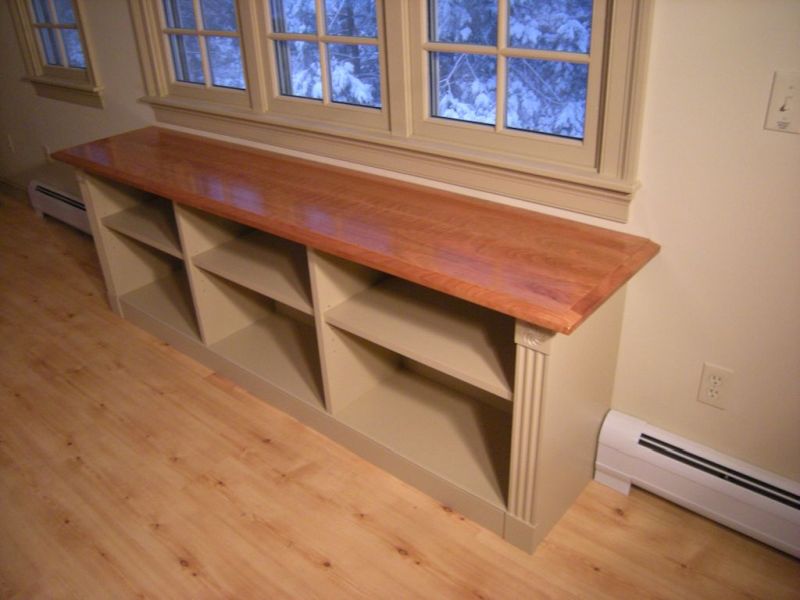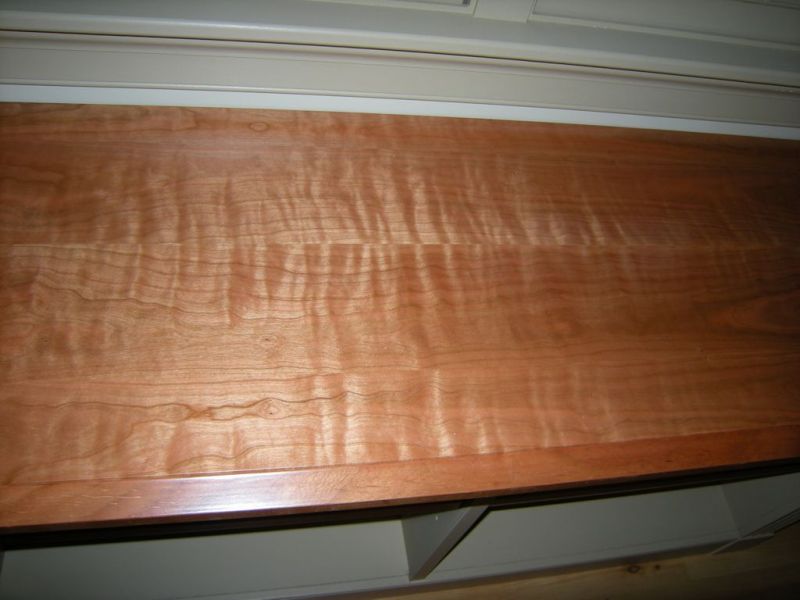Cherry Aging and Figure
Cabinetmakers and instrument makers discuss ways to maintain the distinctive look of strongly figured Cherry, even as the wood darkens over time from exposure to light. March 12, 2014
Question (WOODWEB Member) :
Here's a situation I've never run into before. When finishing curly maple about the best thing you can do to highlight the figure is hand scrape the boards and give it a medium to dark stain. The stain will soak into the hand scraped, opened up curl (end grain) and create the contrast. One would think that this would also be the route to go with flame cherry as the grain pattern is similar to curly maple.
However, I have to wonder if the natural darkening of cherry over time isn't going to end up balancing out the color, thus hiding the desirable flame pattern. I could see this happening whether the wood were stained or left natural. Does anyone have any firsthand experience with this situation?
Forum Responses
(Architectural Woodworking Forum)
From contributor J:
One of the best ways to highlight flame as itís done routinely by guitar manufacturers such as Gibson who use a ton of flame and curly woods. Pick your final color and find a dye that is a little darker and complimentary. Saturate the surface with the dye and wipe away excess. Now sand it back to almost white wood. The curl should still be holding the dye. Now spray a dye as you normally would to get to the correct color. Tone/shade next of your liking. The darker dye in the figure really makes it pop. You will need to experiment to find color combos that work well. I have done this on several guitars I have built and it looks fantastic.
From contributor M:
I've repaired a piece which was exactly as you say, the curl was just muddy (20ish years old). I've also seen this in figured walnut, though I suspect that oxidation or UV deterioration of the pigments had something to do with it these cases (not very well preserved antiques). I really like BLO for cherry, figured or otherwise, and even if it's just for color under a modern finish.
From Contributor S:
As I understand it cherry darkens due to exposure to UV light. You can accelerate the darkening by leaving the boards out in direct sunlight. During a typical Texas summer my stock would reach the maximum darkness in two or three days. If you do more than a light sanding you will expose the lighter wood underneath. UV blocking finish will help preserve the lighter tone, but eventually the cherry will start turning red.
From contributor A:
The curled figure will darken at the same rate, preserving the contrast (provided you're using dye stain). After the first month or two the darkening is slowed considerably. Of the test panels I've made I sprayed Mohawk dye stain very lightly and finished with Becker's pre-cat lacquer. If you have time it's always a good idea to make samples. Cover half of it and put it in a south facing window.
From Contributor B:
Dyes work much better to bring out figure then stains will. I use a diluted black coat first to show any defects and to raise the grain. I then sand again at the last grit (150 in most of my work) then use a full strength coat of dye and the curl or figure will just jump out. I then let dry and add a coat of clear oil base stain, like general finishes seal a cell. Then I top coat and Iím finished. Hope this helps.
From the original questioner:
Thanks everyone for the input on finishing this flame cherry top. I decided to go with no stain at all and a semi-gloss clear lacquer finish. We'll see how the figure contrast holds up over time. I did half a dozen samples with various stains and finishes. The clear finish looked the best to me.

Click here for higher quality, full size image

Click here for higher quality, full size image

